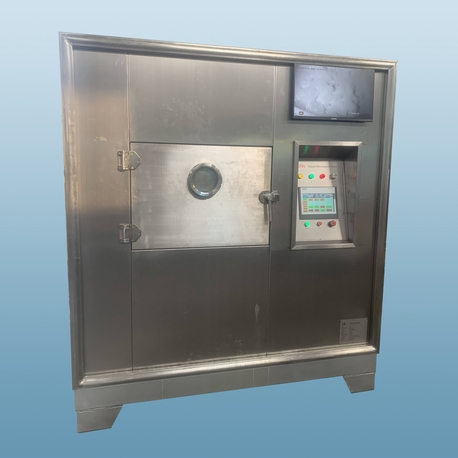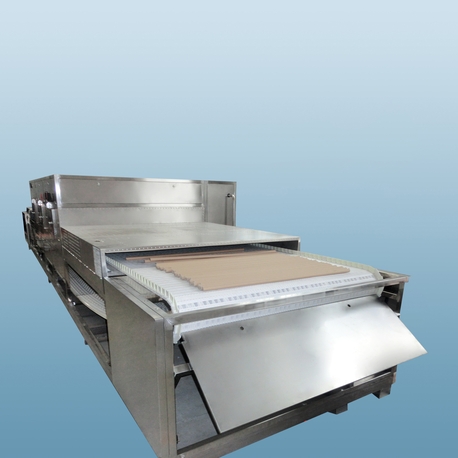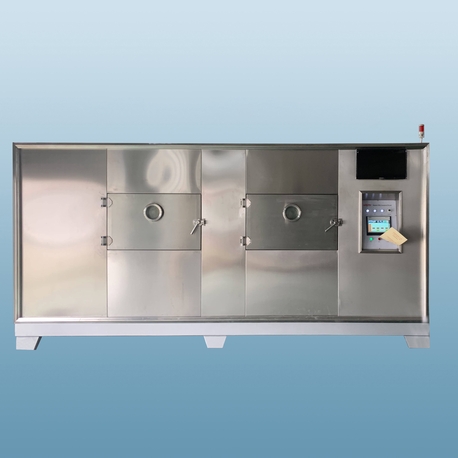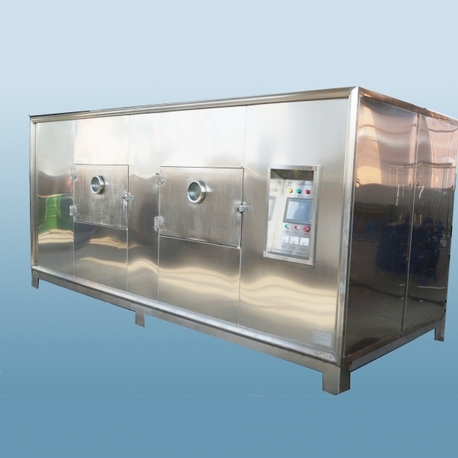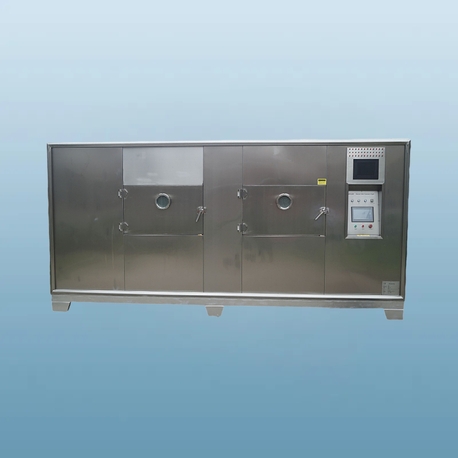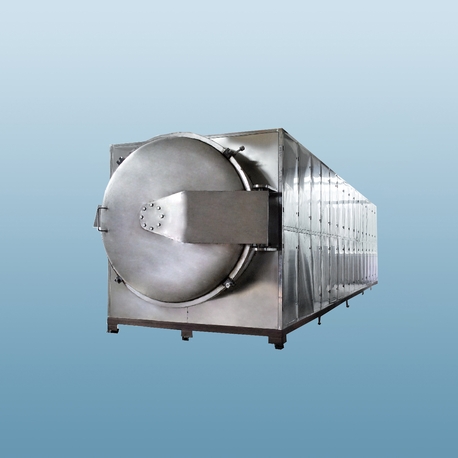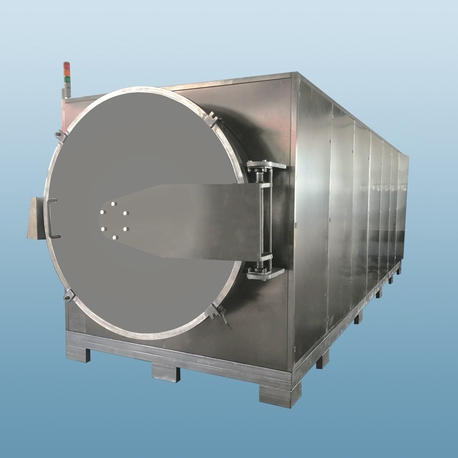In today's fast-paced industrial landscape, the demand for efficient and high-quality drying solutions has never been greater. Among the innovative technologies making waves, the microwave vacuum dryer stands out as a game-changer. This advanced equipment combines microwave energy with vacuum conditions to dry materials quickly and gently, preserving their integrity while reducing energy consumption. As industries from food processing to pharmaceuticals seek ways to optimize production, the microwave vacuum dryer offers a compelling alternative to traditional methods. In this article, we delve into the core aspects of this technology, highlighting its benefits, applications, and practical considerations. By the end, you'll have a comprehensive understanding of why the microwave vacuum dryer is becoming a staple in modern manufacturing.
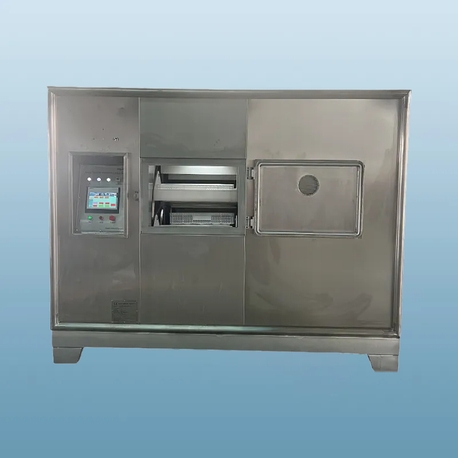
Understanding How a Microwave Vacuum Dryer Works
A microwave vacuum dryer operates on a simple yet powerful principle: it uses microwave radiation to generate heat within the material being dried, while a vacuum environment lowers the boiling point of water. This combination allows for rapid and uniform drying at lower temperatures, minimizing damage to heat-sensitive substances. In a typical setup, the material is placed in a chamber where microwaves penetrate deeply, causing water molecules to vibrate and evaporate. The vacuum pump then removes the vapor, preventing re-condensation and ensuring efficient moisture removal. This process is highly controllable, enabling precise adjustments based on the material's properties. Unlike conventional dryers that rely on external heat sources, a microwave vacuum dryer delivers energy directly to the moisture, resulting in faster drying times and better product quality. For instance, in the pharmaceutical industry, this means preserving active ingredients that might degrade under high heat. The integration of sensors and automation further enhances the efficiency of a microwave vacuum dryer, making it a versatile tool for various sectors.
Key Advantages of Using a Microwave Vacuum Dryer
The microwave vacuum dryer offers numerous benefits that make it a preferred choice for many industries. First, it significantly reduces drying time—often by 50% or more compared to traditional methods—thanks to the direct energy transfer and vacuum-assisted evaporation. This leads to higher throughput and lower operational costs. Second, it maintains product quality by operating at lower temperatures, which is crucial for delicate materials like herbs, chemicals, or biologics that can lose potency or color under harsh conditions. Third, the microwave vacuum dryer is energy-efficient, as it targets only the moisture without overheating the entire system, resulting in lower electricity consumption and a smaller carbon footprint. Additionally, it provides uniform drying, eliminating hot spots that can cause uneven results in conventional dryers. Finally, the compact design of a microwave vacuum dryer allows for easy integration into existing production lines, saving space and facilitating scalability. These advantages collectively contribute to improved profitability and sustainability for businesses adopting this technology.
Applications of Microwave Vacuum Dryers Across Industries
The versatility of the microwave vacuum dryer makes it suitable for a wide range of applications. In the food industry, it is used for drying fruits, vegetables, and spices, preserving nutrients, flavor, and appearance without additives. For example, a microwave vacuum dryer can produce crispy snacks with enhanced taste and extended shelf life. In pharmaceuticals, it plays a critical role in drying active pharmaceutical ingredients (APIs), vaccines, and herbal extracts, ensuring stability and compliance with strict regulatory standards. The chemical industry employs microwave vacuum dryers for processing pigments, polymers, and catalysts, where precise moisture control is essential for product performance. Similarly, in the biotechnology sector, it aids in drying enzymes and microorganisms without denaturing them. Even in materials science, a microwave vacuum dryer is used for ceramics and composites, enabling rapid curing and improved structural integrity. This broad applicability underscores the adaptability of the microwave vacuum dryer, driven by its ability to handle diverse materials while maintaining high standards of efficiency and quality.
Comparing Microwave Vacuum Dryers to Traditional Drying Methods
When evaluating drying technologies, the microwave vacuum dryer often outperforms traditional methods like hot air drying, freeze drying, or spray drying. For instance, hot air dryers rely on convection heat, which can be slow and uneven, leading to energy waste and product degradation. In contrast, a microwave vacuum dryer provides direct, internal heating, resulting in faster and more consistent outcomes. Freeze drying, while excellent for preserving quality, is typically more time-consuming and expensive due to its complex vacuum and refrigeration requirements; a microwave vacuum dryer offers a cost-effective alternative with similar benefits for many applications. Spray drying, common in powder production, can expose materials to high temperatures, risking thermal damage—a issue mitigated by the gentle approach of a microwave vacuum dryer. Moreover, traditional methods often require pre- or post-treatment steps, whereas a microwave vacuum dryer can handle entire processes in one unit, streamlining operations. Overall, the microwave vacuum dryer combines the best of speed, quality, and efficiency, making it a superior choice for modern industrial needs.
Maintenance and Operational Tips for Microwave Vacuum Dryers
To maximize the lifespan and performance of a microwave vacuum dryer, proper maintenance and operation are essential. Regular cleaning of the chamber and vacuum system prevents contamination and ensures consistent results. It's important to inspect seals and gaskets for wear, as leaks can compromise vacuum efficiency. Calibrating sensors and controls periodically helps maintain accuracy in drying parameters. Operators should follow manufacturer guidelines for loading materials to avoid overloading, which can strain the system. Additionally, monitoring energy consumption and scheduling preventive maintenance can reduce downtime and repair costs. For safety, training staff on handling microwave radiation and vacuum hazards is crucial. By adhering to these practices, a microwave vacuum dryer can deliver reliable service for years, supporting continuous improvement in production processes. Investing in quality components and software updates further enhances the functionality of a microwave vacuum dryer, aligning with industry trends toward automation and smart manufacturing.
In conclusion, the microwave vacuum dryer represents a significant advancement in drying technology, offering speed, quality, and efficiency across various sectors. Its ability to combine microwave energy with vacuum conditions addresses many limitations of traditional methods, making it an invaluable asset for industries aiming to innovate and compete. As technology evolves, we can expect further refinements in microwave vacuum dryer designs, such as improved energy recovery and AI integration, driving even greater adoption. Whether you're in food, pharma, or chemicals, understanding and leveraging a microwave vacuum dryer can lead to substantial benefits in productivity and product excellence.
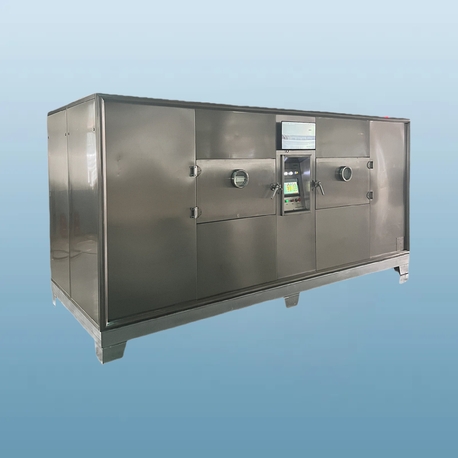
Frequently Asked Questions About Microwave Vacuum Dryers
Q1: What types of materials are best suited for a microwave vacuum dryer?
A1: A microwave vacuum dryer is ideal for heat-sensitive materials that require gentle drying, such as pharmaceuticals, food products, herbs, and certain chemicals. It works well with substances that have high moisture content and need preservation of active compounds, colors, or textures.
Q2: How does a microwave vacuum dryer compare to a conventional oven in terms of energy use?
A2: A microwave vacuum dryer is generally more energy-efficient than a conventional oven because it directs energy specifically to the moisture within the material, reducing waste heat. The vacuum environment also lowers energy requirements by facilitating faster evaporation at lower temperatures.
Q3: Can a microwave vacuum dryer be used for large-scale industrial production?
A3: Yes, a microwave vacuum dryer is scalable and can be designed for large-scale operations. Many industries use it in batch or continuous processes, with models available to handle high volumes while maintaining consistency and quality.
Q4: What safety precautions are necessary when operating a microwave vacuum dryer?
A4: Key safety measures include ensuring proper shielding to prevent microwave leakage, using personal protective equipment, and following lockout-tagout procedures during maintenance. Regular training on vacuum and electrical hazards is also recommended to avoid accidents.
Q5: How long does the drying process typically take in a microwave vacuum dryer?
A5: The drying time in a microwave vacuum dryer varies based on the material and conditions but is often significantly shorter than traditional methods—ranging from minutes to a few hours. For example, drying herbs might take 30-60 minutes, compared to several hours in a hot air dryer.


